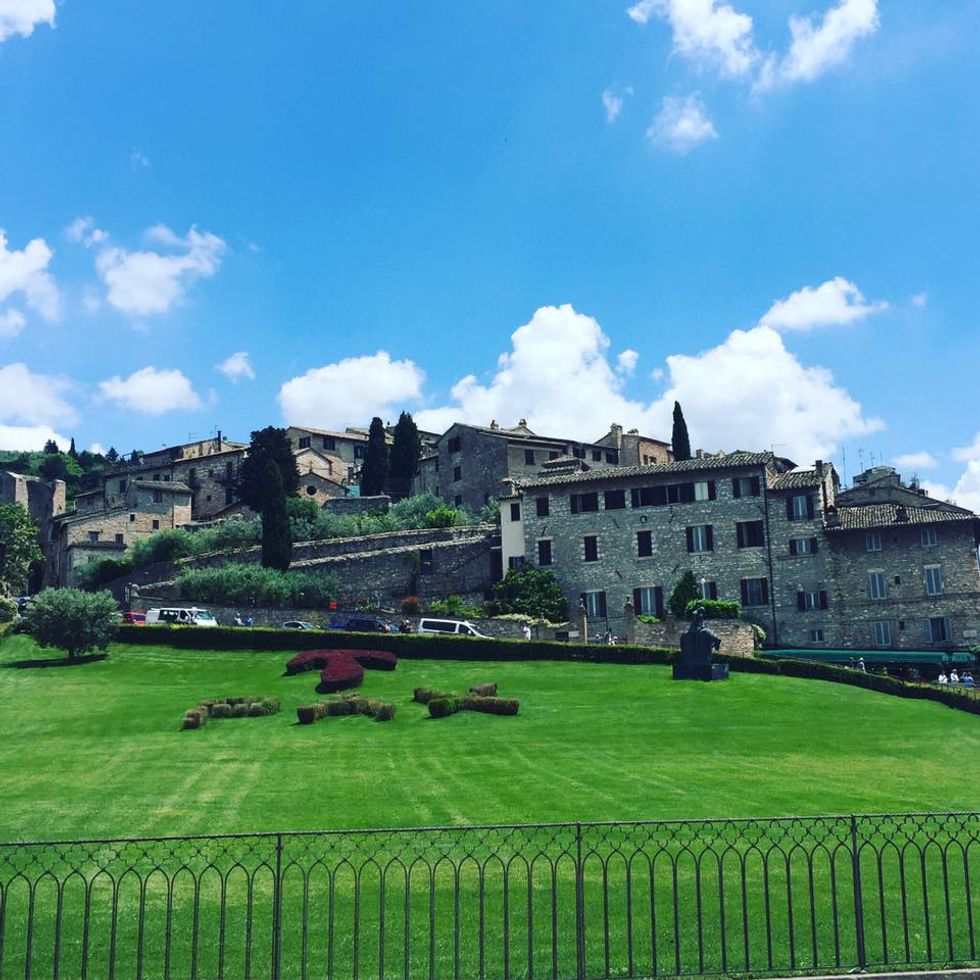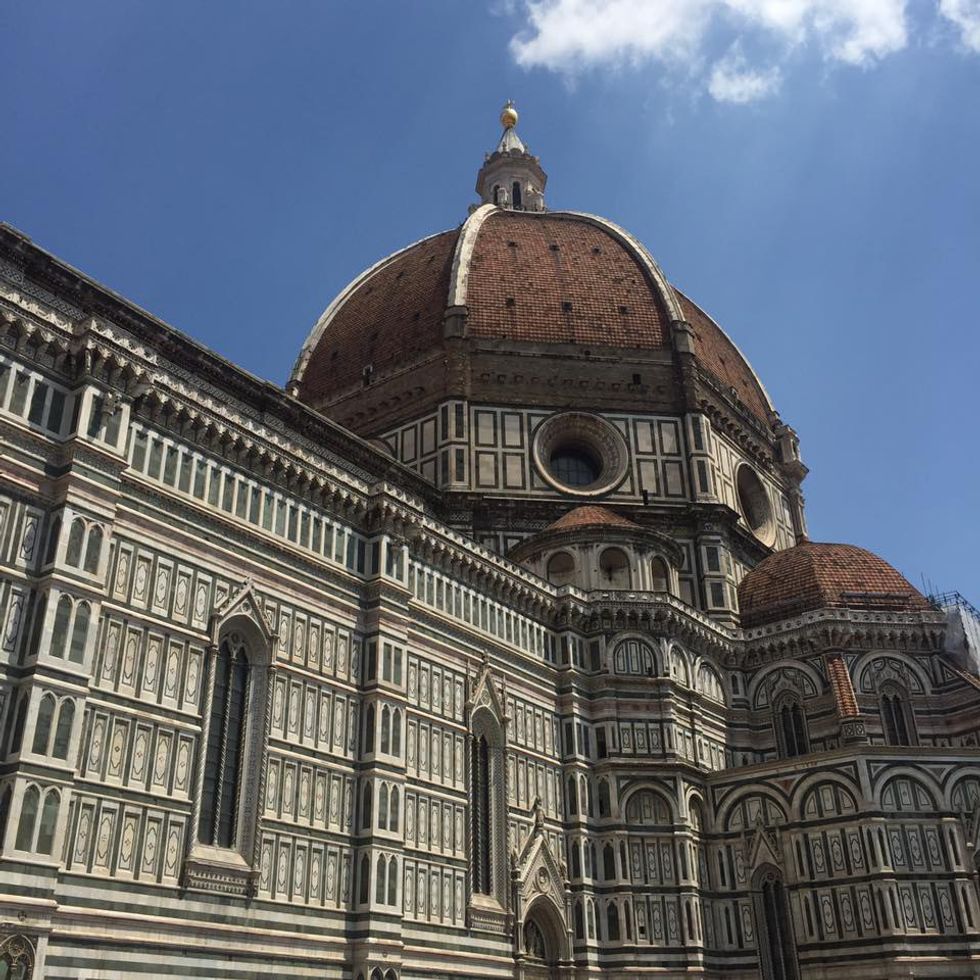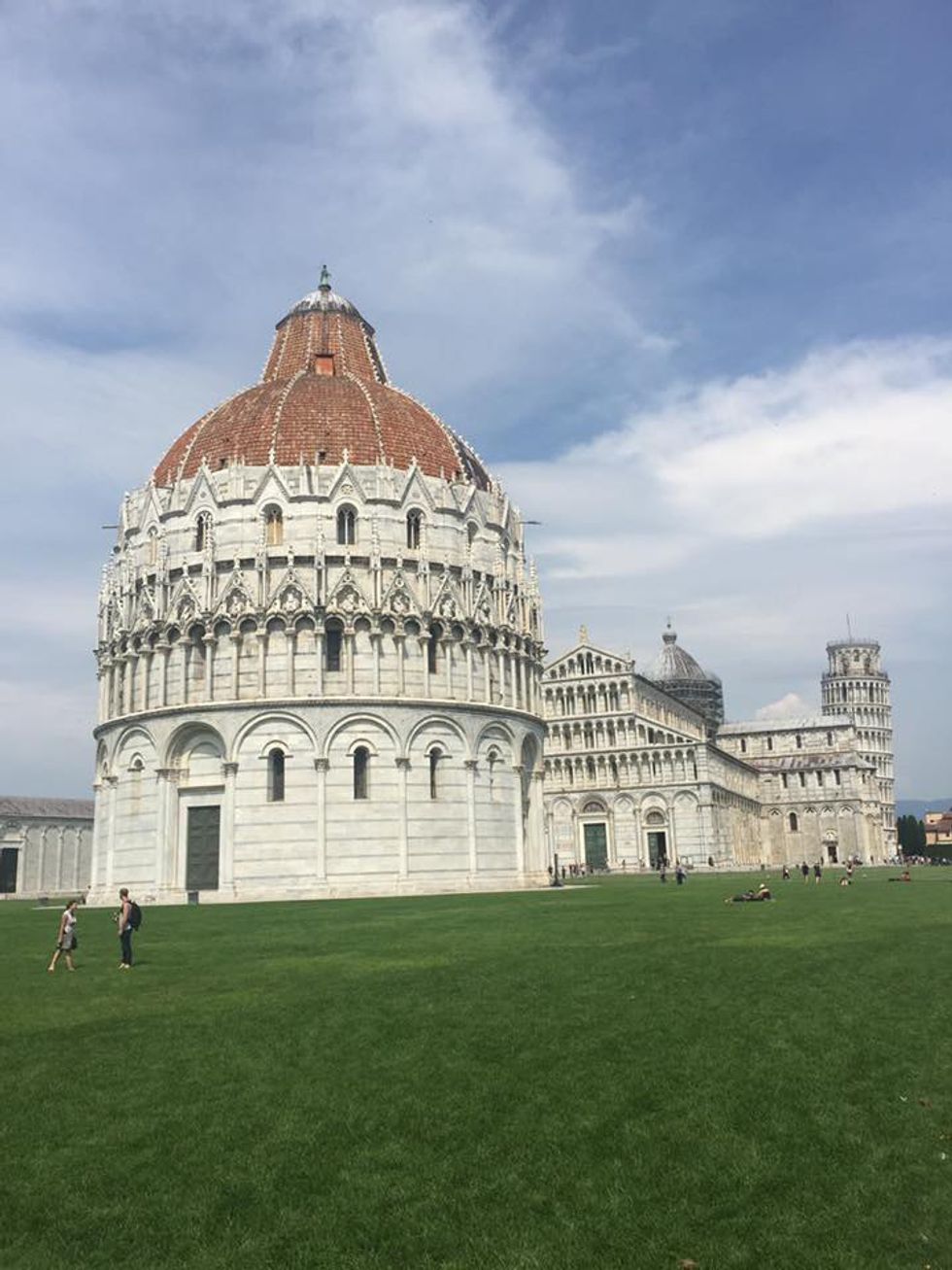In seventh grade history class, the chapter about the Renaissance stood out to me the most, especially the significance of the city of Florence during that time period. From Michelangelo to the Medici family, this was a city rich in art, culture, and beauty. From the moment I saw the textbook photograph, I knew that I had to go to Florence someday. Then, when I was watching NBC’s "Hannibal," the third season’s setting changed to this Renaissance city and sparked my excitement even more. This summer, I was able to go to Florence and see all the sights of the show and from my history books.
Before actually reaching Florence, we stopped and spent some time in the small city of Assisi, which is the birthplace of St. Francis and St. Clare. St. Francis is the patron saint of the environment, as well as the founder of the Franciscan religious order. St. Clare founded the Poor Sisters, which later became the Order of the Poor Clares. While there our tour took us through the Basilica of San Francesco d’Assisi, which contains St. Francis’ tomb and various beautiful frescoes by the artist Cimabue and his famous student, Giotto. This cathedral was one of the first built in the Italian Gothic style, which is why it still retains many elements of the previous Romanesque period. Because St. Francis is the patron saint of nature and animals, people often bring their pets to the church courtyards and grounds for blessings. Because of this lovely tradition, I was able to find many sweet dogs to photograph and made several posts in Facebook’s Dogspotting group.
After touring the cathedral, we were given some free time to grab lunch in town. My mother and I stumbled upon a shop where handsome workers were giving out samples of the delicious prosciutto and cheese sandwiches. We of course just had to go in and one of the employees right away started treating us and a few other customers to a complimentary wine tasting accompanied by samples of delicious cheeses and spreads. Funnily enough, all of the employees were good-looking young men; no wonder business was booming. My mom and I shared a sandwich and spent the rest of our time in Assisi walking around and popping into other interesting shops.
Once we left Assisi, the tour bus drove through exquisite Tuscan countryside. The weather in Italy may have been similar to that of California, but in Tuscany the hillsides were so lush and green, with beautiful villas peeking through the vineyards. One movie I’ve seen countless times is Under the Tuscan Sun, about a writer who moves to Tuscany to rejuvenate her life. It felt surreal that now I was the one literally under the Tuscan sun and experiencing this iconic countryside.
Finally, we arrived in the city of Florence, known as Firenze to the Italians. Because it was evening by the time we arrived, we checked in to the hotel, changed, and went to an optional excursion to a lively restaurant and winery on the scenic outskirts of the city. The atmosphere was jovial and inviting, with a live band playing music and the chef serving us a special blue champagne that tasted sweet and like peaches. The food was delicious and the wine, which came in varieties from extraordinary reds and whites to a season strawberry wine, flowed endlessly. Needless to say that by the time the feast was over, no one was sober. The best way to enjoy an evening in Italy is to be full of good food and wine after all.
The next day we went on a walking tour of the city that took us from the cathedral Santa Croce to famous Florentine leather shops and then to the highly anticipated Florence Cathedral. The long tour across the city’s cobblestone ended at the Piazza della Signoria next to the Uffizzi Gallery; in this piazza one can find the Palazzo Vecchio and a collection of famous statues and sculptures, including a detailed copy of Michelangelo’s David. The statues displayed payed homage to Italy’s Roman roots by depicting the empire’s triumphs, as well as significant and powerful mythological/religious figures, to show off Florentine strength to visitors and intimidate enemies.
After the walking tour, my family and I headed back to Florence Cathedral, which was one of the most anticipated landmarks for me. The Gothic cathedral’s exterior is very ornate, with detailed designs and sculptures carved out of red, white, and green marble. It is truly a stunning sight to behold. In contrast, the interior is much more simple, but still beautiful. The gigantic dome was designed by Brunelleschi and the campanile (bell tower) by Giotto. The baptistery next to the cathedral is also beautiful with red, green, and white marble. However, the baptistery was designed and built in the Romanesque style, rather than the Gothic like the cathedral. The baptistery is most famous for its ornate gold-plated bronze doors, especially because of the competition that was created for artists who wanted to design the doors. Even though Brunelleschi, a seasoned master, had sent in his design, a newcomer, Ghiberti, actually won.
The next day was one I had been extremely excited for the entire trip: the tour of the Uffizzi Gallery and Vasari Corridor. The Uffizzi Gallery is one of the most renowned in the world, housing artworks by the most significant Italian artists like Giotto, Lippi, and Botticelli. The Vasari Corridor, designed by Giorgio Vasari, connects the Uffizi Gallery and Palazzo Vecchio to the Palazzo Pitti across the river. Duke Cosimo I de’ Medici commissioned this enclosed passageway for his daughter-in-law, Joanna of Austria, because she had tuberculosis and needed to be able to easily get away from the city pollution to the clean environment of the Palazzo Pitti without fear of assassination. Today the Uffizzi portion of the Vasari Corridor is used to display the museum’s extensive collection of famous self-portraits.
It’s stupid, but one of the main reasons that I wanted to visit the Uffizzi Gallery was to see one specific painting by Botticelli, La Primavera. Why exactly is it kind of dumb that I was crazy about that specific work of art? It was one of the paintings featured in season three of NBC’s Hannibal. In his younger days living in Florence, Hannibal Lecter had arranged his victim’s corpses artistically so that they resembled the composition of La Primavera, and the show has significant scenes where Hannibal and Will Graham go to the Uffizzi Gallery and sit together in front of that painting. I of course did not have the luxury of sitting in front of that painting in complete tranquility like the characters in the show, but I did fight my way through the crowds to get pictures and seeing that beautiful painting was worth the struggle. The overall tour of the Uffizzi Gallery was wonderful because I had the opportunity to see many famous artworks that I had studied in AP Art History, and I was able to go on the exclusive tour of the Vasari Corridor.
On the last day we had in Florence, my family and I returned ourselves to Santa Croce, a cathedral that houses the tombs of many important Italian figures such as Galileo, Michelangelo, and Machiavelli. The church was beautiful, and had special exhibits of a Medici chapel and different religious altarpieces embellished in gold. Then, we went with our tour to Pisa to see the Square of Miracles, where the Pisa Cathedral, Pisa Baptistery, Campanile, and Monumental Cemetery are located. You might better know the famous Campanile as the Leaning Tower of Pisa. The white monuments were stunning, but we were there for only a short time and did not go inside any of the buildings. It was fun to watch people taking stupid photos with the Leaning Tower, pretending to hold it up or push it over. Once the tour was finished, we headed to an olive estate for one last Tuscan dinner and learned how olive oil was made. The food and wine were delicious, and the scenery was breathtaking despite the rain.
After that night began our journey to Venice, which I will describe in my next Italian travel article. Florence was a beautiful and fascinating city, but I did not feel the connection with the city that I expected to feel when I was first studying it. I loved the experience, but to be honest I was expecting more. The food, wine, and clothing in Florence were the best however. I do want to go back in the future because I did not have the chance to see the statue of David or any of Michelangelo’s other famous sculptures at the Galleria dell'Accademia due to scheduling conflicts with the tour of the Uffizzi Gallery.























